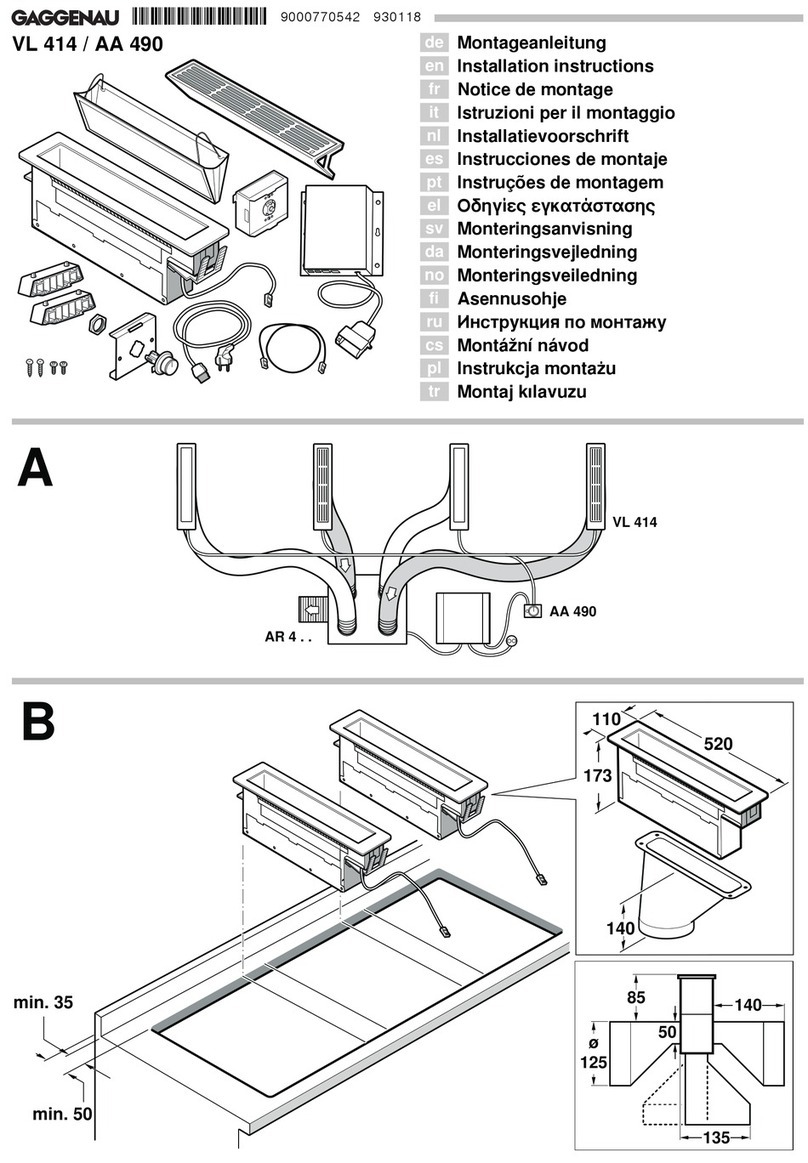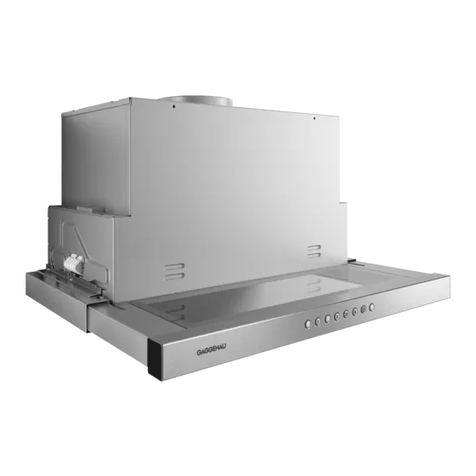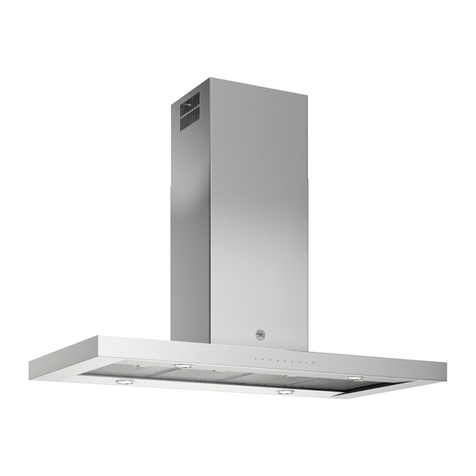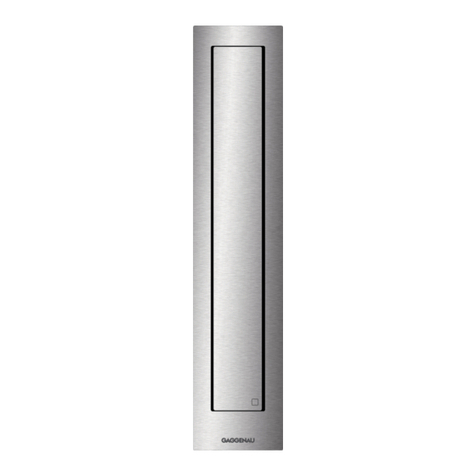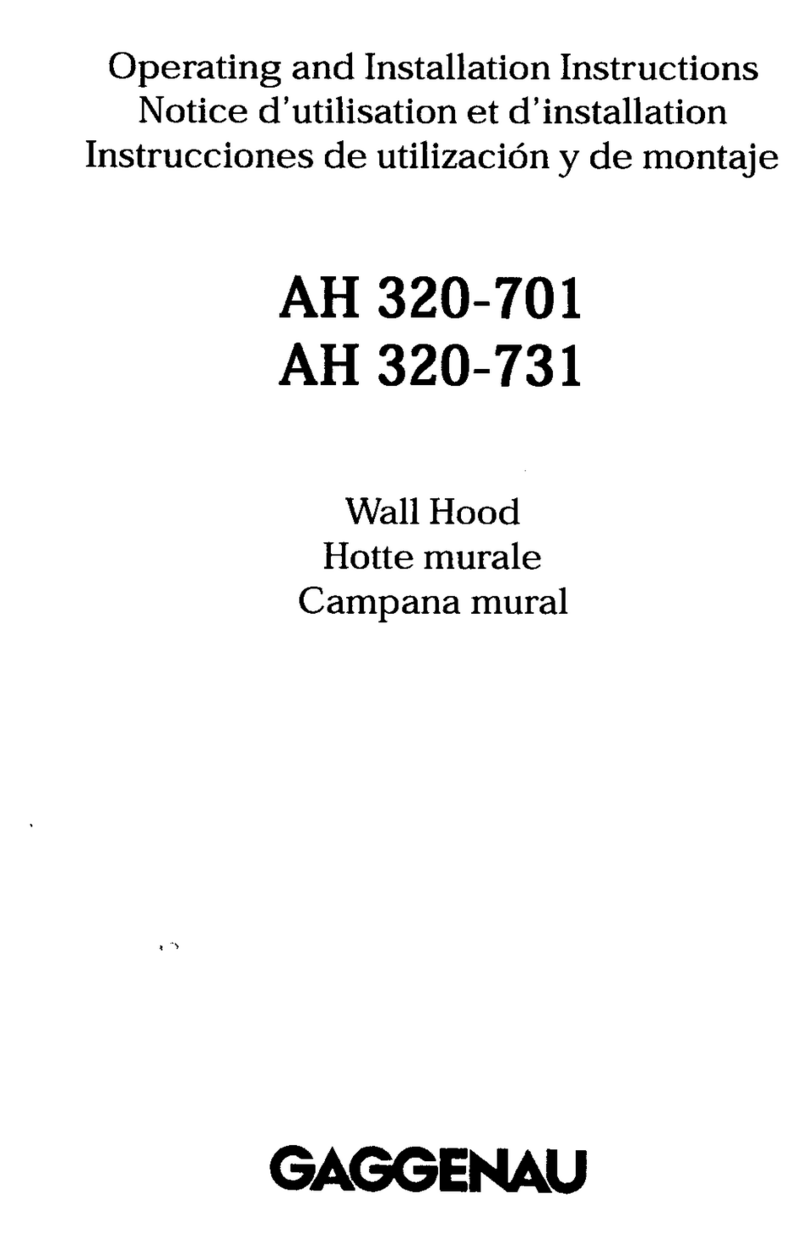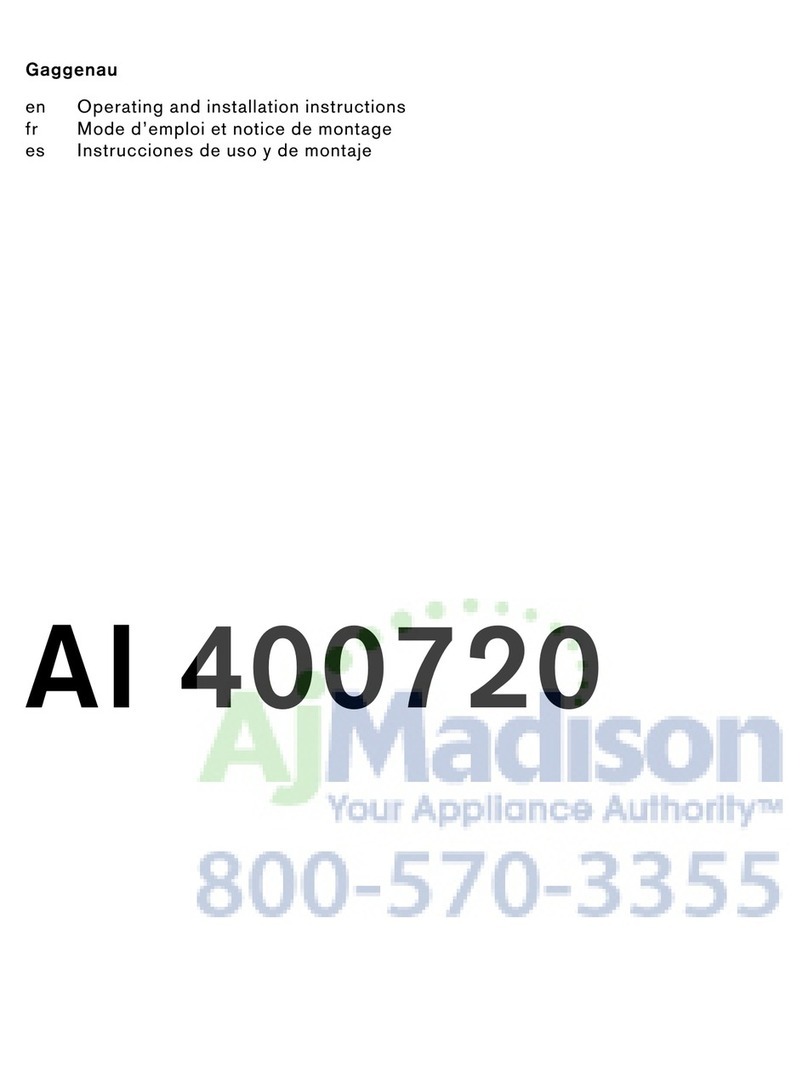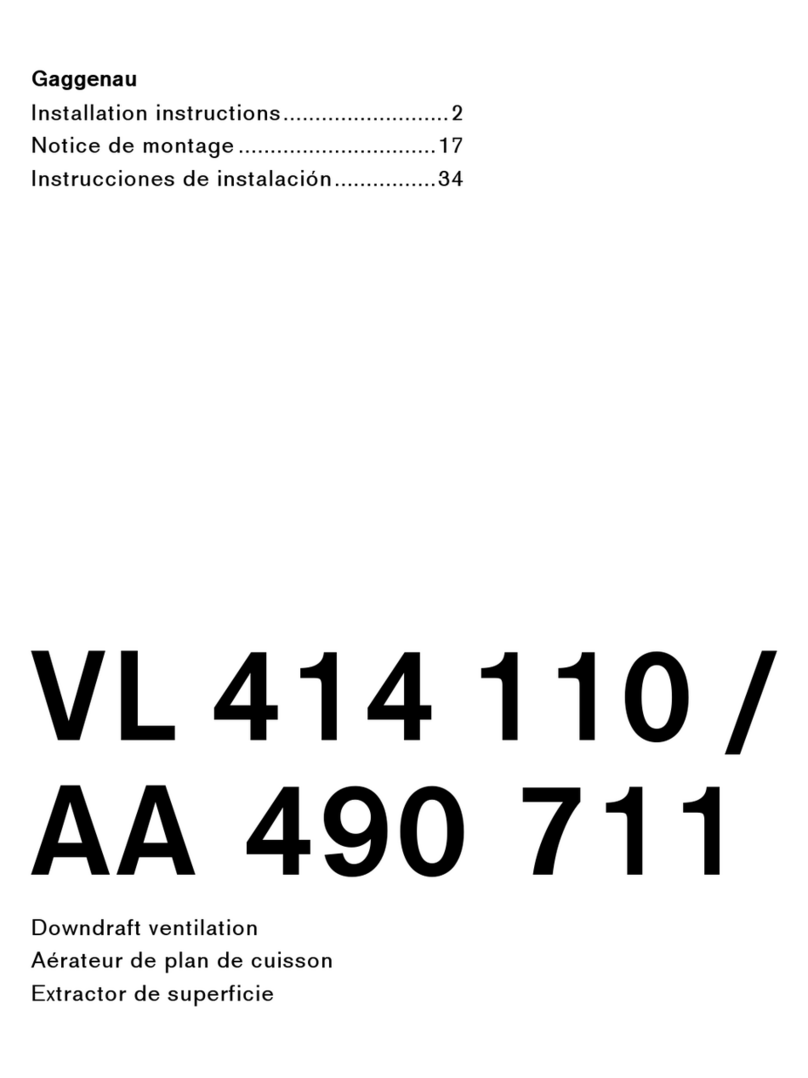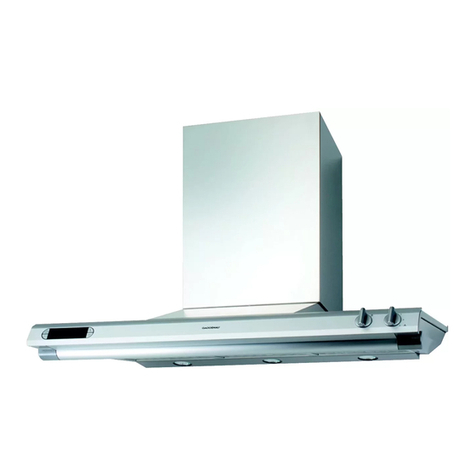3
1. Important notes
1.1 For your safety
Damaged appliances must not be operated.
The appliance must only be connected by an
authorised specialist, paying attention to the
relevant regulations of the power supply companies
and the regional construction regulations.
Also o serve the assem ly instructions!
Connecting ca les must not come into contact
with hot cooking surfaces.
Hazardous or explosive substances and vapours
must not be extracted!
The user is responsible for expert use and the
perfect condition of the appliance.
Never operate the appliance without a grease
filter.
Only ever operate the appliance under
supervision. The appliance is intended solely for
use in the household and must not be put to any
other uses.
Do not place any o jects on the appliance;
this will have a detrimental effect on functioning.
Do not place any objects under the swivel arm
when it is extended. Make sure that there are no
obstacles in the swivel and entry range.
Do not clean the appliance with a steam cleaning
apparatus or with water pressure because this
poses a risk of short-circuits.
Isolate the appliance from the mains during every
maintenance operation. To do this, remove the
mains plug or actuate the corresponding fuse. If the
mains plug is not accessible, the appliance must be
deenergised by means of the domestic installation
fuse.
In the event of malfunctions, first of all check
the household fuses. If the malfunction has nothing
to do with the power supply, please contact your
specialist dealer or your responsible Gaggenau
after-sales service. Repairs must be carried out
by authorised specialists, thus ensuring electrical
safety.
After a power failure, the hob ventilator will not
switch on automatically, but must be reset instead
by any operator action.
When operated next to gas appliances, the swivel
arm must be extended at least to the top edge of
the pan as otherwise the flame of the gas burner
will be impaired. Gas appliances may only be
used next to a hob ventilator when pots and pans
are placed on them! Please note that a wok must
not e installed next to a ho ventilator.
No warranty claims can be lodged in the event
of damage caused by failure to observe these
instructions.
Caution! Over-greased filters are a fire risk! Only
ever deep-fry under the extractor under constant
supervision. Pay attention to cleaning the grease
filter on a regular basis.
Fire risk! It is not permitted to flambé meals next
to a hob ventilator that is in operation.
You may only ever use a grill or a deep fryer at
the same time as the hob ventilator if it is under
constant supervision.
This will involve a fire risk!
When the ventilator is installed next to gas
appliances, swivelling of the boom in the direction
of the gas must be prevented by an additionally
fitted pin (see assembly instructions).
Caution! The appliance may get very hot!
Risk of urns!
Technical modifications reserved.




